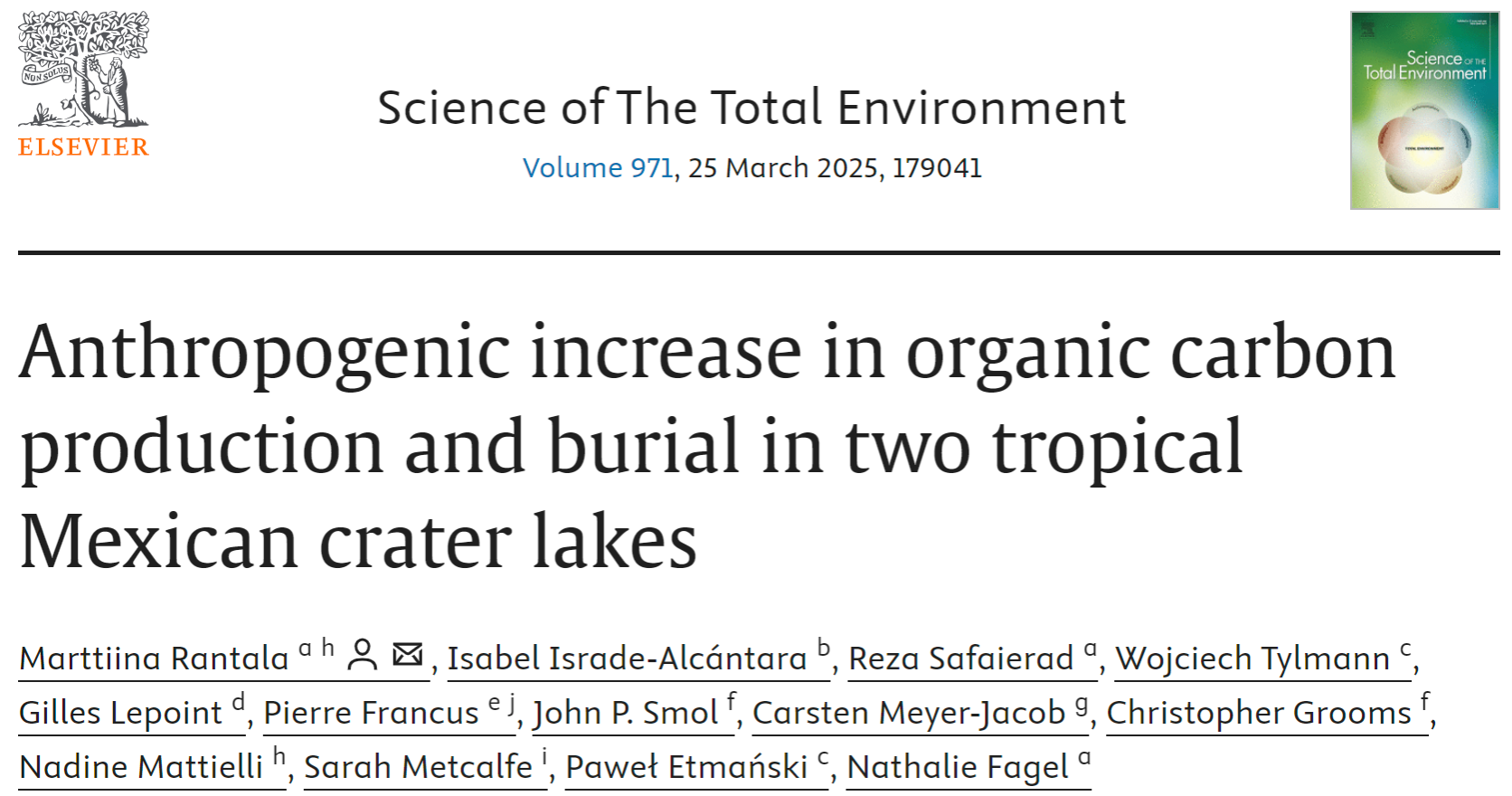We know that lakes bury significant amounts of organic carbon (OC) in their sediments contributing to the removal of carbon from the short-term carbon cycle. In this publication, we sought to expand knowledge of natural and anthropogenic controls of lake carbon cycling at lower latitudes by investigating four centuries of changes in the carbon sink of two tropical lakes in Central Mexico.
Using biogeochemical and paleoecological indices, we uncovered systematic patterns in lake carbon dynamics in both studied lakes, including a three- to seven-fold increase in OC burial over recent decades. Over the last four centuries, sediment biogeochemistry in both lakes suggested shifts in water balance and lake levels that appear to be important drivers of OC production and organic enrichment in the lakes, linking them to regional climate variability. However, increased sediment accumulation rates over the past couple of decades, suggest that the predominant factor influencing increased OC burial rates was related to growing local human disturbance.
Rantala M., Israde-Alcántara I., Safaierad R., Tylmann W., Lepoint G., Francus P., Smol J.P., Meyer-Jacob C., Grooms C., Mattielli N., Metcalfe S., Etmański P., Fagel N., 2025, Anthropogenic increase in organic carbon production and burial in two tropical Mexican crater lakes. Science of The Total Environment 971, 179041. https://doi.org/10.1016/j.scitotenv.2025.179041
https://www.sciencedirect.com/science/article/pii/S004896972500676X
